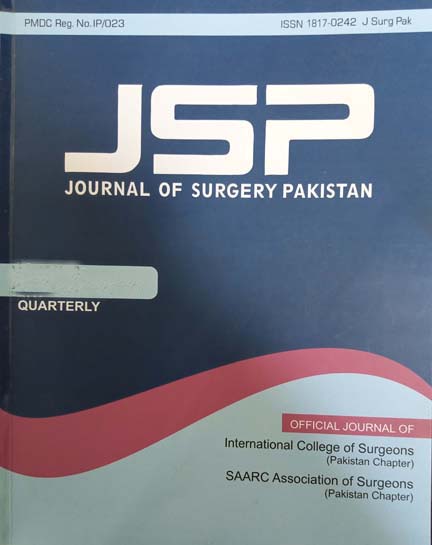An Audit of Gynecological Hysterectomies
Rubina Hafeez, Tehmina Mahar
Abstract
Objective
To determine the frequency, indications, clinical concordance with histopathological diagnosis and complications of gynecological hysterectomies.
Study design
Retrospective study.
Place & Duration of study
Department of Obstetrics and Gynecology Unit II, Ghulam Muhammad Mahar Medical Collage Hospital (GMMCH) Sukkur, from January 2018 to December 2020.
Methodology
All patients who underwent hysterectomy for gynecological reasons were included. Obstetrical hysterectomy cases were excluded. Data was recorded on specially designed form and descriptive statistics were used for presentation.
Results
A total of 121 hysterectomies were performed during the study period. There were 103 (85.1%) abdominal and 18 (14.9%) vaginal hysterectomies. Most of the patients were between 35 years to 50 years of age. Parity was from 0 – 10. Majority of patients were para 5. Most common indication of hysterectomy was fibroid (n=41 - 33.9%) followed by dysfunctional uterine bleeding (n=31 - 25.6%), and uterovaginal prolapse (n=18 - 14.9%). In 90.9% patients the pathological findings were in concordance with the preoperative clinical diagnosis. Ten (8.2%) patients developed wound infection, and 2 (1.6%) had pelvic abscess after vaginal hysterectomy.
Conclusion
Uterine fibroid was the commonest indication followed by dysfunctional uterine bleeding (DUB) for the hysterectomy. High concordance found between clinical diagnosis and histopathological findings.
Key words
Abdominal hysterectomy, Vaginal hysterectomy, Fibroid uterus, Dysfunctional uterine bleeding.

